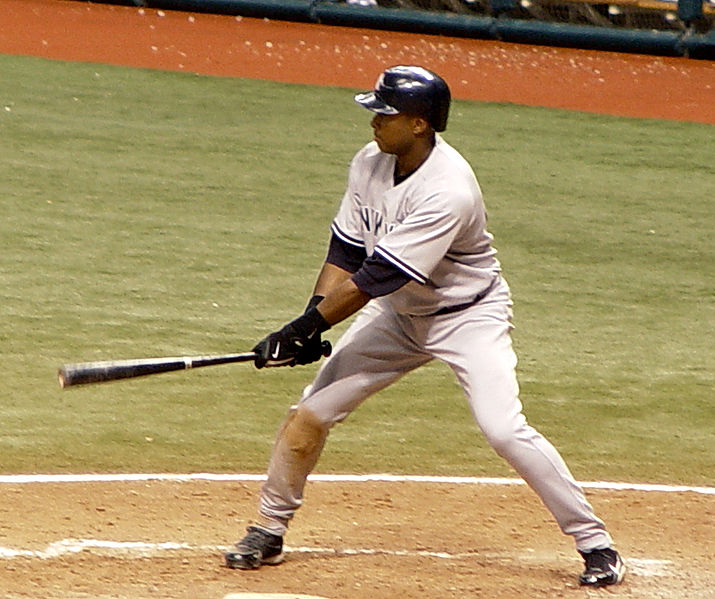Spring Survival: Dan Gray on how to hit a baseball

Illustration by John Aston Golden
We checked out some lists of top “parenting” books and found titles like Unconditional Parenting and How To Talk So Kids Will Listen and Listen So Kids Will Talk. Not one on how to hit a baseball. HA! Any baseball mom or dad knows parenting doesn’t begin until your kid strikes out with the bases loaded. We called Dan Gray, former Los Angeles Dodger and owner of ProSwing in Mount Kisco, for some tips on how to hit a baseball and deal with the roller coaster of emotions your child will discover when they try.
WTD: Dan, if you could give us one tip on batting what would it be?
Dan Gray of ProSwing Mt. Kisco
Dan: You know Mr. Dalessandro I’ve done seven hitting clinics with Yankees batting instructor Kevin Long and he always starts out the same way. When you get up to the plate you have to get as athletic as possible. He talks about getting into a defensive crouch in basketball. In a lot of sports it is easy to find your athletic balance. In baseball it’s hard. You have to work on finding your center at the plate. Square up, get comfortable in a relaxed athletic stance and then start your pre-swing rhythm. If you watch baseball on TV you’ll see what I mean. Josh Hamilton has this little bounce in his knees that he does to get him to his legs early so he creates a base to work off the power in his lower half. Mark Texiera makes little circles with his bat. Derek Jeter has a bat thing going too. They all create some pre-swing rhythm to stay athletic while they wait for the ball to travel and to generate bat speed. You don’t want to be tense and motionless at the plate.
WTD: So we shouldn’t tell our kids to stop waving the bat? When I was growing up I was told if you wave your bat you swing late.
Dan: Yeah. Me too. All that has changed. Because the important thing is what happens once your front foot hits the ground. That’s when your swing starts and that’s when your hands have to be in the right place. Texeira’s bat is all over the place but when his foot is down his hands are always in the same spot to move forward and get to the hitting zone.
WTD: I showed my son old footage of Joe DiMaggio and all I could think was “that’s not how they do it today.”
Dan: All changed. Back then everything was done on the front foot. Leaning into the ball. Now it’s all off the back foot, the back legs and the hip rotation to get your power. Try to find what works for you and be consistent.
WTD: Let’s talk about confidence. How do you build a kid’s confidence?
Dan: Preparation breeds confidence. Whether it is finding your technique and doing the repetitions to build consistency at bat or knowing your game situations and responsibilities in the field. Use your practices to get mentally prepared because once you get into a game you don’t want to be thinking. Practice is for thinking. Games are for reacting. Do your mental prep in practice, then clear your head and let your muscle memory take over in the game.
WTD: What do you do when a kid loses confidence?
Bernie Williams photo by Googie Man
Dan: You know Bernie Williams used to work out at ProSwing towards the end of his career with the Yankees. Here’s a guy who had already had a near Hall of Fame career and he told me that he had a tendency to roll his wrists and hit a lot of ground balls to second base. And then he would lose his confidence and go into a slump. Everybody loses his or her confidence. It’s part of being a human being. You can’t escape it.
WTD: So don’t blame it on the coach?
Dan: Hey, you know a lot of coaches do inappropriate things. Some, it seems, specialize in ruining a player’s confidence. But, if it’s not the coach it’s going to be something else. You’re going to lose your confidence because that’s what humans do and baseball taxes our confidence more than anything in the world. Baseball is a game of failure.
WTD: All Star players make out 7 out of ten times.
Dan: Tommy Lasorda, when I first met him when I played in the Dodgers organization, spoke about this. He said, you know if you’re a surgeon and 7 out of 10 of your patients die you’re not going to be a surgeon very long. If you’re an architect and 7 out of 10 of your bridges collapse you’ll never build another bridge. But make out 7 times, hit a line drive, a seeing eye single and have a pop up drop in front of the right fielder and you’re going to the hall of fame. So you have to learn to live with failure in baseball. That’s why it is such a great, a difficult, but great way for kids to learn how to deal with it.
WTD: But how do you teach a kid to live with failure?
Dan: Never think about results. Forget about your batting average. You struck out. Did you have a good at bat? Did you keep your hands back and take a good cut at the ball. You grounded out to second base. You had two strikes and the pitcher threw you a perfect pitch at the knees on the outside corner and you grounded out to second base. You did good. That’s where the ball wanted to go. You couldn’t have done much more with that pitch. A few feet to the right and it’s a walk off hit and you’re a hero. Sometimes it’s not you. Sometimes the pitcher made a good pitch. Go through your last 10 at bats and count the quality at bats you had. That’s your batting average.
WTD: What if you measure your last 10 at bats for quality and not results and you still stink?
Dan: You know, Mr. D’Alessandro, I had a friend who I played Little League ball with. When he was 11 years old he went an entire season without touching the ball. Completely missed every pitch he swung at for a full season. Not even a foul tip. Seven years later we went off together to SUNY Binghamton on baseball scholarships. And a few years after that we were both drafted by the Los Angeles Dodgers. He decided not to let failure ruin his dream. It’s just the nature of the game.
Dan Gray was a three-time Conference All Star at SUNY Binghamton and played six seasons of professional baseball, four in the Los Angeles Dodgers organization. He currently owns and operates ProSwing, a baseball training and instructional facility in Mt. Kisco. (ProSwing, 27 Radio Circle Drive, Mt. Kisco, 914.242.1626; www.proswingbaseball.com)
























